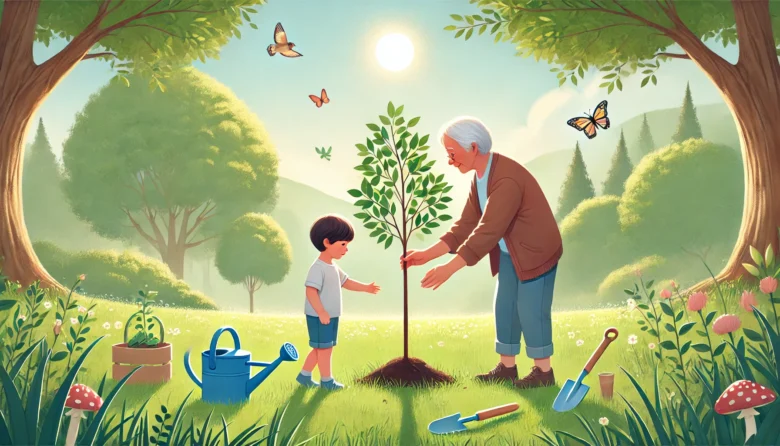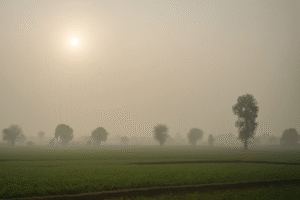Fun Fact: In Japan, adult diapers now outsell baby diapers—a sign that the world isn’t getting younger.
We’re living longer. That’s good news, right? After all, who wouldn’t want to enjoy more sunsets, more stories with grandchildren, and more chances to perfect their recipe for kadhi-chawal? But while we celebrate longer lifespans, we often forget to ask a critical question: What does an ageing population mean for the planet?
Welcome to The Longevity Era—a time when people live longer than ever before, and society must grapple with the environmental implications of that remarkable shift. This isn’t just about healthcare or pensions anymore. It’s about air, water, land, and the very sustainability of human life on Earth.
The Grey Wave Is Rising
Globally, populations are ageing faster than ever. According to the United Nations (UN), by 2050, one in six people will be over the age of 65, compared to one in eleven in 2019. Countries like Japan, Italy, Germany, and even China are facing rapidly greying populations. India, while still relatively young demographically, is catching up, too.
But what does this mean for the environment?
Let’s break it down.
Longer Lives, More Consumption
The idea that older people consume less is misleading. In reality, the consumption patterns of the elderly, especially in developed and urbanising countries, are often more carbon-intensive.
Think about it:
Elderly individuals tend to live alone or in smaller households, which increases per capita energy use (heating, lighting, and electronics).
Many depend on cars due to reduced mobility, leading to more emissions per person.
Medical needs rise significantly with age. From energy-intensive hospital equipment to disposable medical supplies, the ecological footprint of healthcare is staggering.
In the United States, the healthcare sector alone contributes to 8.5% of the country’s total greenhouse gas emissions. Imagine what that means on a global scale as more people enter old age.

Healthcare’s Hidden Carbon Footprint
You might think of a hospital as a place of healing. But it’s also a silent polluter. MRI (Magnetic Resonance Imaging) machines, surgical lighting, climate control systems—these are all energy hogs.
Moreover, elderly care often requires:
Air conditioning and heating year-round.
Pharmaceuticals production and disposal (another major pollutant).
Plastic waste from single-use medical tools, incontinence products, and packaging.
This raises a provocative question: Can we afford to keep everyone alive this long, environmentally speaking?
Urban Planning Under Pressure
The ageing population reshapes cities and infrastructure. But do we build with sustainability in mind?
Most cities weren’t designed for older people. Now, retrofitting urban areas with ramps, lifts, and accessible transport options adds to construction emissions. Add the trend of suburban migration among older individuals, where public transport is minimal, and you get a spike in private vehicle use.
Let’s also not forget:
More elevators = more electricity.
More care homes = more land and resources.
More dependence = more packaging, deliveries, and disposable goods.
We’re urbanising with the age, but not always in green ways.
The Silent Strain on Natural Resources
Longer lifespans mean more mouths to feed for more years. Even with declining birth rates, the total global population remains high because people live longer.
This affects:
Agricultural demand: More food, more water, more fertiliser.
Waste management: An ageing population produces significant waste, especially biomedical and electronic waste.
Land use: Cemeteries, retirement communities, and age-friendly housing are land-hungry developments.
And we haven’t even touched on funeral practices. Cremations release harmful gases, while traditional burials use chemicals and take up valuable land.
Climate Change and Vulnerability
Here’s the irony: The generation that contributed most to climate change (through industrialisation and consumption) is now the one most vulnerable to its effects.
Elderly people are at the highest risk of:
Heatwaves
Flooding
Air pollution
Waterborne diseases
And as we gear up for more frequent climate disasters, governments will need to divert resources to protect this fragile demographic. That’s not inherently bad, but it diverts funds from long-term environmental fixes.
Silver Linings and Green Potential
Now, before we start blaming grandma for climate change, let’s be fair. The elderly also hold immense potential for sustainability.
Many seniors:
Tend to avoid waste due to habits from pre-consumerist eras.
Prefer public transport and walking—if infrastructure permits.
Value resource conservation.
Programs that engage older people in climate action—from community gardens to recycling drives—have shown great success.
And let’s not forget the intergenerational connection. When grandparents educate children on sustainability, the impact spans generations.
What Can Be Done?
We can’t reverse ageing (and we shouldn’t want to). But we can adapt wisely.
Here’s how:
Green healthcare: Incentivise hospitals to use renewable energy and reduce plastic waste.
Eco-urban design: Create walkable, mixed-use neighbourhoods suitable for all ages.
Sustainable elder care: Use biodegradable products, energy-efficient systems, and community-based models.
Policy incentives: Support innovations in “green geriatrics,” such as solar-powered elder homes or low-emission mobility aids.
And perhaps most critically, change the narrative. Instead of seeing the elderly as a burden, recognise them as a resource for environmental education and climate wisdom.
Conclusion: The Environmental Cost of Living Forever
The Longevity Era is here. People are living longer than ever before—and that’s a victory of science, public health, and human resilience. But we must also confront the uncomfortable truth: longevity has a price tag, and the environment is picking up the bill.
As we navigate this demographic shift, we must ask: Are we building a world that supports longer lives sustainably? Or are we just delaying death at the planet’s expense?
It’s time to act—not just for the young, but for the old who still have many years to live, and for the Earth that must support them all.
Author’s Note:
I wrote this piece not to provoke guilt but to ignite awareness. We owe it to ourselves—and future generations—to ensure that our years are not only longer but lighter on the planet.
G.C., Ecosociosphere contributor.
References and Further Reading:
- United Nations Report on Ageing Populations (https://www.un.org/en/global-issues/ageing)
- Health Care Pollution and Public Health (https://www.healthaffairs.org/doi/10.1377/hlthaff.2020.01415)
- Financial Implications of Aging Populations: Pension systems and healthcare costs – Mudrahome. https://mudrahome.com/blog/financial-literacy/Financial-Implications-of-Aging-Populations-Pension-systems-and-healthcare-costs




